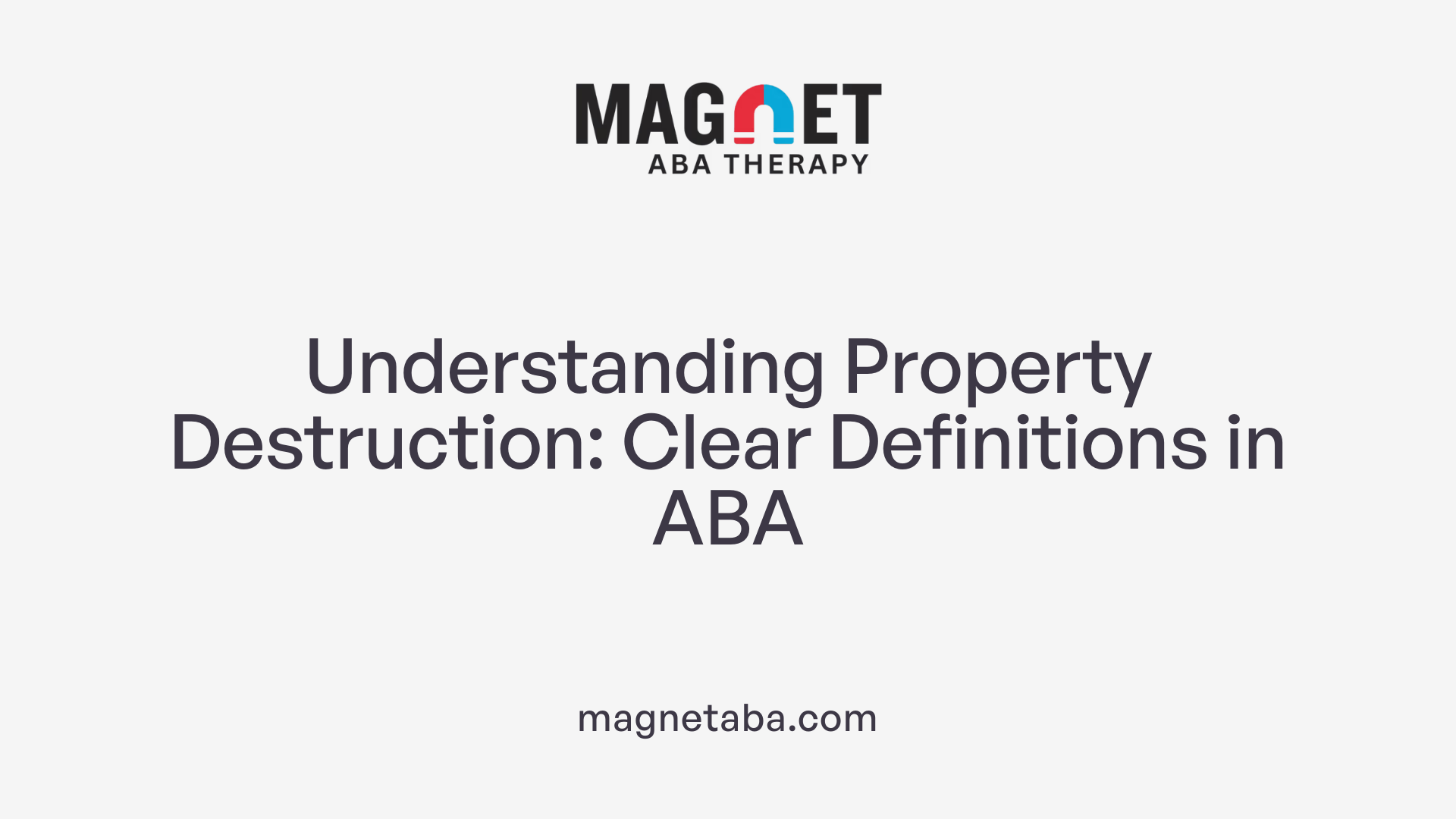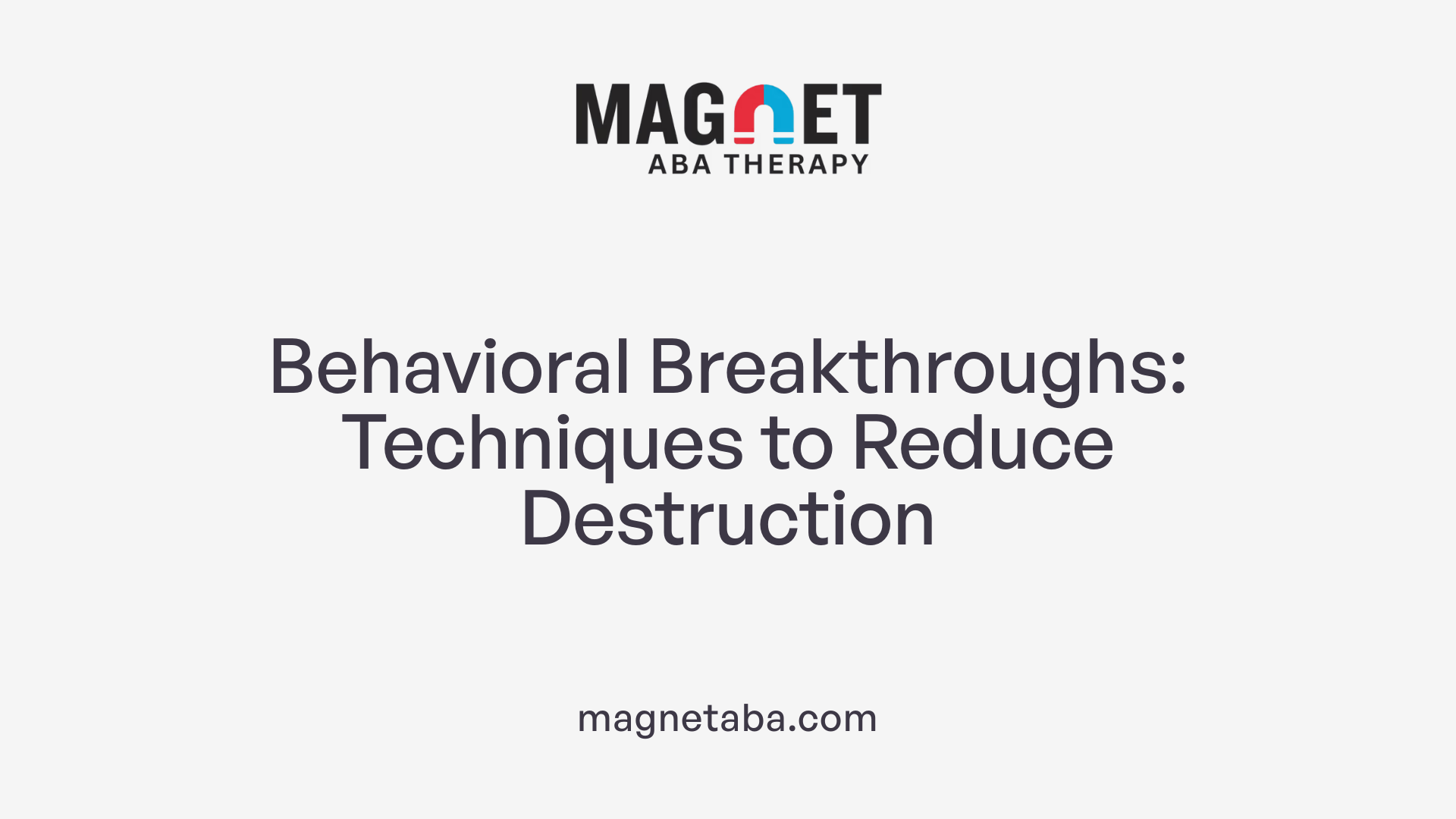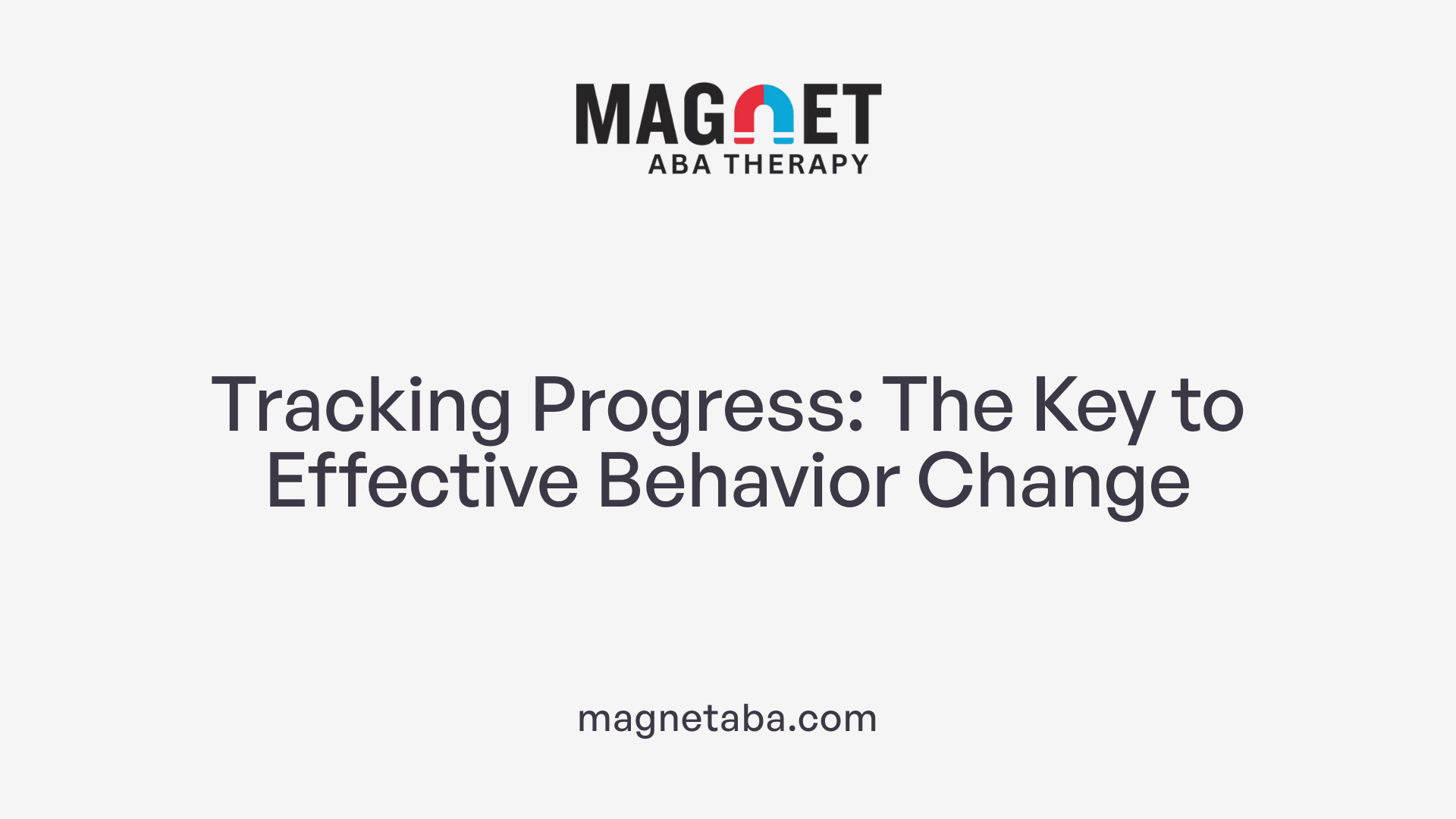Understanding and Addressing Property Destruction Through ABA
Property destruction is a common challenge in behavioral therapy for children with autism. By understanding its functions and implementing targeted ABA strategies, caregivers and professionals can significantly reduce destructive behaviors, improve safety, and promote positive social and communication skills.
Operational Definition of Property Destruction in ABA

What is the operational definition of property destruction in ABA?
In Applied Behavior Analysis (ABA), property destruction is clearly defined to help identify and measure damaging behaviors accurately. It refers to any action performed by a child that causes damage to objects or materials in their immediate environment.
This includes a range of behaviors that might seem impulsive or reactive, but are understood within a framework that emphasizes their physical impact. For example, throwing objects with force to break or damage items, hitting or kicking objects, overturning furniture, climbing on or pulling down objects, and swiping or pulling items from surfaces are all considered property destruction.
A practical illustration is projecting an object with enough force from at least 6 inches away to cause damage—this is classified as property destruction. Conversely, playing catch gently or handling objects carefully does not fall under this definition.
The emphasis in this operational definition is on behaviors that have the potential to harm or damage property, regardless of the child's intent. This focus allows clinicians and caregivers to systematically identify these behaviors, track their occurrences, and develop specific interventions.
By defining property destruction in tangible, observable terms, ABA professionals can better assess the function of these behaviors, measure progress over time, and implement targeted strategies to minimize damage and promote more appropriate behaviors.
Understanding this definition is essential in creating effective treatment plans that reduce destructive actions, enhance safety, and support the child's development of functional communication and coping skills.
ABA Strategies for Reducing Property Destruction
What are effective ABA strategies to reduce property destruction?
Addressing property destruction in children with autism requires a comprehensive and individualized approach grounded in applied behavior analysis (ABA). One of the most effective strategies involves teaching functional communication skills. This enables children to express their needs and feelings verbally or through gestures, reducing frustration-driven behaviors like throwing, breaking, or damaging objects.
Reinforcing these alternative behaviors with positive praise and rewards encourages the child to adopt acceptable ways of communicating and coping. For example, teaching a child to ask for a break or a preferred item can replace destructive actions driven by sensory overload or emotional upset.
Establishing clear and consistent boundaries is also crucial. Using visual supports such as schedules, social stories, or visual rules provides predictability and clarity. This helps children understand what is expected of them, decreasing anxiety and confusion that might lead to property destruction.
Creating a safe and structured environment further minimizes potential triggers. Childproofing the space by securing fragile or dangerous objects, reducing access to items that may encourage destructive behavior, and organizing stimulating activities can help prevent incidents.
Identifying specific individual triggers—such as sensory overload, difficulty communicating, or emotional distress—is essential. Tailoring interventions to address these factors may involve sensory accommodations like noise-canceling headphones or calming sensory activities. Addressing emotional triggers through calming routines or coping skill teaching can also significantly reduce destructive behaviors.
In addition to proactive measures, reactive strategies are important. These include calmly redirecting the child to appropriate activities, teaching them how to cope with overwhelming situations, and reinforcing positive behaviors immediately after they occur.
Overall, integrating these strategies within a consistent ABA framework, with ongoing data collection and treatment plan adjustments, supports meaningful reductions in property destruction and promotes safer, more adaptive behaviors.
Addressing the Function of Destructive Behaviors in ABA
What is a Functional Behavior Assessment (FBA)?
A Functional Behavioral Assessment (FBA) is a systematic process used in ABA to understand why a child engages in destructive behaviors like property destruction. It involves gathering data through observations, interviews, and assessments to identify the specific triggers and consequences that maintain the behavior. By pinpointing whether the behavior is motivated by attention seeking, escape, sensory needs, or a desire for tangible items, practitioners can build a clear picture of the behavior’s purpose.
The FBA acts as a foundation for creating effective, individualized intervention plans. Instead of simply addressing the behavior without understanding its cause, ABA professionals use FBA results to guide their strategies, ensuring interventions target the actual function of the destructive actions.
How does ABA typically address destructive behaviors to improve social functioning?
ABA addresses destructive behaviors, including property destruction, by analyzing their functions and developing tailored strategies. This starts with identifying what the child gains or avoids through their actions—that is, their triggers and what maintains the behavior.
Therapists then craft intervention plans that focus on functional communication skills. For instance, if a child destroys objects to escape a demanding task, teaching them appropriate ways to request a break can fulfill the same need without damage.
Reinforcement plays a vital role. Desirable behaviors are strengthened through positive reinforcement, such as praise or preferred items, to encourage alternative responses. Techniques like modeling, prompting, and shaping help children learn new skills that replace destructive actions.
Over time, this structured approach helps improve social functioning by increasing adaptive communication and self-regulation. Children learn to express their needs effectively, reducing frustration and anger that often lead to property destruction.
The role of sensory reinforcement in destructive behaviors
Many children with autism seek sensory input, which can reinforce property destruction. For some, the act of breaking or tapping objects produces sensory stimulation that feels satisfying or calming. Recognizing this, ABA treatment may incorporate sensory-based strategies.
Providing safe, matched toys or sensory tools can satisfy sensory needs without damaging property. For example, offering textured objects or activities that produce similar sensory feedback can help reduce the child's desire to destroy items.
Blocking responses to destructive behaviors or redirecting attention to preferred sensory activities can prevent property damage while meeting sensory needs. This understanding of sensory reinforcement is crucial in designing interventions that are both respectful and effective.
Developing function-based intervention plans
An effective ABA plan hinges on understanding the behavior’s function. Once triggers and maintaining consequences are identified, interventions are customized to address these specific factors.
Plans often include teaching functional communication, such as sign language or picture exchange systems, to replace destructive responses with appropriate requests.
Environmental modifications are also common, like rearranging the setting to minimize access to triggering objects or incorporating visual supports to set clear expectations.
Reinforcement strategies are tailored to the individual, ensuring that desirable behaviors are consistently reinforced across settings. Regular data collection assesses the plan's effectiveness, allowing for ongoing adjustments.
Through comprehensive analysis and personalized strategies, ABA aims to reduce property destruction and foster better social, communication, and self-regulation skills. This approach underscores the importance of understanding each child's unique needs to support their growth and development.
Behavior Reduction Techniques Used in ABA

What are common behavior reduction techniques used in ABA?
Behavior reduction methods in ABA focus on decreasing challenging behaviors like property destruction through systematic strategies. These include adjusting schedules to make daily routines more predictable, offering choices to empower children and reduce frustration, and using visual supports such as visual schedules or timers to clarify expectations.
Consequence-based interventions are fundamental, employing reinforcement for appropriate behaviors and extinction for destructive actions. For example, ignoring attention-seeking property destruction, while reinforcing appropriate ways of seeking attention or communicating can lead to significant reductions.
Also, modifying environmental factors—like rearranging spaces to limit access to triggers or providing sensory-friendly activities—helps prevent destructive episodes. Data collection plays a crucial role, monitoring behavior changes over time and ensuring the effectiveness of strategies.
In essence, these techniques aim to promote positive alternative behaviors, making everyday interactions smoother and more manageable for children while supporting their developmental goals.
Data Collection and Monitoring Progress

Why is data collection crucial in ABA for property destruction?
In ABA therapy, systematically gathering data on destructive behaviors provides essential insights into their frequency, triggers, and consequences. This allows clinicians and caregivers to evaluate whether specific interventions are working or need adjustment.
Accurate data helps tailor individualized treatment plans. It enables professionals to understand the underlying causes of property destruction, such as communication difficulties or sensory overload, and to monitor changes over time.
Implementing systematic data collection
Data collection involves recording incidents of property destruction along with contextual information like environment, activity, and the child's emotional state. Using tools such as behavior tracking sheets, time sampling, or data software facilitates consistent monitoring.
Monitoring the effectiveness of interventions
Regular review of collected data helps assess whether interventions—like teaching functional communication or modifying the environment—are reducing destructive behaviors. Graphs and trend lines visually depict progress and highlight patterns.
Adjusting treatment plans based on data
If data shows limited or no improvement, treatment plans can be modified. Adjustments might include introducing new replacement behaviors, changing environmental arrangements, or refining reinforcement strategies.
Continuous data monitoring ensures that interventions remain responsive to the child's evolving needs, ultimately leading to more successful and sustainable outcomes.
Long-term Outcomes and Challenges in ABA Treatment

How sustainable are the changes achieved through ABA therapy?
Applied Behavior Analysis (ABA) has shown to produce significant and often lasting improvements in behavior, especially in reducing destructive behaviors such as property destruction. Studies report an average reduction of 96%, indicating that the positive effects can be durable when interventions are correctly implemented. However, sustaining these improvements depends heavily on ongoing reinforcement, caregiver involvement, and periodic reassessment.
Long-term success relies on embedding learned skills into daily routines and environments. Continuous data collection and treatment adjustments ensure that behaviors remain under control and new skills are maintained. When progress is monitored and strategies are adapted, many individuals maintain their gains well beyond the initial intervention period.
What barriers hinder access and consistent implementation of ABA?
Despite strong evidence supporting ABA’s effectiveness, numerous obstacles prevent some children from benefitting fully. Key barriers include a shortage of specialized ABA units, limited insurance coverage that isn’t tailored for managing destructive behaviors, and lengthy waitlists that delay treatment initiation.
Insurance reimbursement practices often require detailed documentation and slow approval processes, which can cause delays in necessary interventions. Additionally, high costs and limited availability of trained professionals further restrict access, especially in underserved communities.
Inadequate integration of ABA into broader health services and systemic issues within healthcare can lead to relapse or regression once initial gains are achieved. These barriers highlight the need for systemic improvements to expand access and support sustained behavioral progress.
How do treatment plans and ongoing assessments contribute to long-term success?
Customized, adaptable treatment plans are vital for maintaining positive outcomes in ABA therapy. Treatment plans, including Behavior Intervention Plans (BIPs), are regularly updated based on continuous data collection. This ensures interventions remain relevant and effective as the individual’s needs evolve.
Ongoing assessment allows clinicians to identify emerging challenges, modify strategies, and reinforce progress. It involves systematic monitoring of incidents, contextual factors, and overall behavior patterns.
Responsive treatment planning, supported by rigorous single-case experimental designs, helps tailor interventions precisely. This responsiveness increases the likelihood of sustained improvements, enabling children to develop skills that promote independence and safety in various settings.
| Aspect | Description | Importance |
|---|---|---|
| Data collection | Tracking behavior incidents and contextual variables systematically | Guides decision-making and intervention adjustments |
| Personalized plans | Customization based on individual behavioral functions and progress | Ensures relevance and effectiveness of treatment |
| Continuous review | Regular updates to treatment based on latest data | Maintains progress and prevents regression |
| Caregiver involvement | Training and engagement of caregivers in implementation | Reinforces skills and sustains behavior change |
By incorporating these elements, ABA therapy can achieve durable change and adapt to changing needs, ensuring long-term positive outcomes.
Practical Applications and Caregiver Involvement

Training caregivers and educators
Empowering caregivers and educators with effective ABA strategies is essential for reducing property destruction in children with autism. Providing training on recognizing triggers, teaching functional communication, and implementing reinforcement techniques helps ensure consistency across settings. Caregivers learn how to respond calmly to destructive behaviors and how to teach alternative, appropriate behaviors.
Consistency across environments
Consistency is critical for success. When caregivers, teachers, and therapists follow similar procedures and reinforcement strategies, the child receives clear messages and is more likely to learn new skills. Using visual supports, such as schedules or cue cards, helps children understand expectations and reduces frustration.
Implementing proactive strategies
Proactive approaches focus on preventing property destruction before it occurs. Creating structured routines, offering choices, and incorporating sensory-friendly activities help reduce agitation. Visual schedules inform children about daily tasks, reducing uncertainty and anxiety. Providing sensory breaks and offering appropriate outlets for sensory input can also diminish the need for destructive responses.
Engaging caregivers through ongoing training and collaborative planning ensures that interventions are consistent and tailored to each child's needs. This shared approach enhances the effectiveness of ABA therapy and supports the child's progress in managing challenging behaviors.
Harnessing ABA to Foster Safer and More Functional Behavior
ABA provides a comprehensive, evidence-based framework to address property destruction in children with autism. Combining functional assessments, individualized intervention planning, proactive environmental modifications, and continuous data collection ensures that destructive behaviors are significantly reduced while supporting skill development. Engaging caregivers and educators in consistent implementation enhances treatment outcomes, fostering safer environments and enabling children to develop more appropriate responses for communication and emotional regulation. Despite challenges like access and funding, the long-term benefits of ABA in promoting adaptive behaviors and improving quality of life underscore its vital role in behavioral intervention.
References
- How to Address Property Destruction in ABA Therapy - Rori Care
- Barriers to Accessing Effective Treatments for Destructive Behavior
- Assessment and treatment of destructive behavior maintained by ...
- What Is Property Destruction Behavior In Autism - 8 Tips To Manage It
- How to Address Challenging Behaviors with ABA in 4 Simple Steps
- Behavior Management in ABA Therapy: A Guide for Parents
- Interventions to Reduce Escape and Avoidant Behaviors in ...
- ABA treatment approaches to problem behavior. - APA PsycNET











